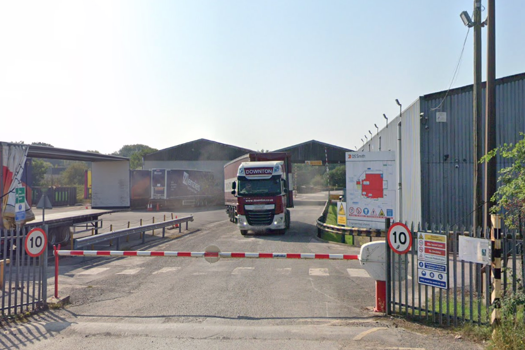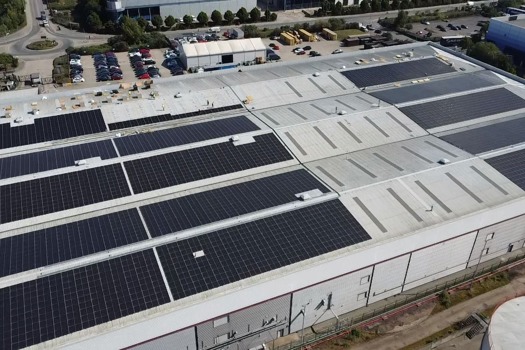What does it do?
Ultimate TechnoGraphics is a long-established Canadian developer of imposition software, called Impostrip. Its Ultimate Bindery is a standalone ‘middleware’ software solution designed to fill the information gap between pre-press and finishing.
It can take any JDF-imposed job and complete it in one stage with the necessary parameters needed to automatically set up a whole sequence of finishing equipment such as perfect binder, saddle-stitcher, cutter, slitter-creaser, three-knife cutter, etc. The job only needs to be defined once and then there’s no need for separate programming of devices including complex sequences for guillotines. This includes support for short-run work with variable cutting lengths.
The company calls it “the glue between pre-press and finishing”. It says: “It provides a data stream enabling the automatic setup of a device or devices, from same or different vendors, from one finishing step to many. It works with Imposition programs and workflow solutions capable of delivering the correct input format. It is designed to be an open, vendor-agnostic solution.”
When was it introduced and what markets is it intended for?
Ultimate Bindery was originally introduced as a concept at Drupa 2008. This could only drive one device at a time. Today’s latest version 5.8 can drive more than 60 different devices, and can manage complete finishing workflows and/or inline finishing options.
It’s particularly intended for automating the setup of short runs, web-to-print, hybrid printing, variable data printing, on-demand books or transactional printing.
Ultimate’s CEO Julie Watson says that anyone with a supported finishing device could use it. However, she says: “Its greater value comes from an environment with an increasing number of short-run jobs with varying setups, or an environment requiring process standardisation, or even in a facility where staff shortages are a challenge.”
The idea is to remove as many touchpoint processing steps as possible.
How does it work?
Ultimate Bindery is locally hosted as an ‘on-premises solution’ which connects directly to finishing devices, and in some workflows also connects directly to the presses. The user interface is HTML5 so Ultimate Bindery is set up and controlled via web browsers. Multiple levels of access privilege can be set up for different users.
In operation it takes imposed JDF data from upstream and validates it as suitable for the intended finishing devices, taking into account the imposition, sheet size, press and other factors. It then interprets the JDF file into the required format for the finishing devices. “It is the glue between the devices, not the decision-maker,” says Watson.
She says: “It understands the needs and requirements of the individual finishing devices and translates the finishing and setup data for each device. This can be one or multiple devices in a chain – for instance folding, stitching and trimming. In such a workflow it also understands the changes that the printed sheet goes through and takes account of that for the different devices.”
Although Ultimate has its long established and sophisticated Impostrip for imposition, Watson says that an imposed JDF file from any source is treated the same, and there are no extra features hidden in Impostrip output.
By setting up whole sequences of finishers, and allowing for the changes in size format, etc, at each stage, Bindery can save a lot of effort in individual setups, and also avoid common points of error. Thus, says Ultimate, it saves time and labour effort, allows more jobs per day to be produced, and reduces waste and remakes.
There’s a long list of more than 60 drivers for finishing devices (too long to list here, but you can read it at https://bit.ly/49cdd09), including mostly specific models plus a few generics that can be adapted. Ultimate Technographics works with the manufacturers to develop drivers tailored to their specific capabilities.
Although not central to its purpose, Ultimate Bindery can also return some operating data from production machines to a collection point such as an MIS.
What’s the USP?
“Ultimate Bindery gives the ability to the user to test a combination of post-press processes, creating, custom finishing building blocks that are also re-processable through Ultimate Bindery,” says Watson.
How easy is it to implement?
“It is fairly easy to implement and connect upstream and downstream,” says Watson. “With a couple of hours of implementation assistance from our team, customers can have some finishing workflows ready for testing.”
Training is handled by Ultimate itself or by value-added resellers.
How is it priced?
Ultimate Bindery subscription licence (including Titanium Service Plan – technical support, updates and upgrades) base software £2,450; one driver £800. Perpetual licence (including first-year Titanium Service Plan – technical support, updates and upgrades) base software £5,850; one driver £1,950.
SPECIFICATIONS
Function Finishing workflow middleware for JDF imposition files
Platform HTML5 accessed by web browser
Drivers More than 60 covering CP Bourg, Duplo, Horizon, Meccanotecnica, Microcut, Muller Martini, Perfecta, Plockmatic, Polar-Mohr, Schneider Senator, Scissorhands, Tecnau, Wohlenberg
Price Ultimate Bindery subscription licence base software £2,450; one driver £800. Perpetual licence base software £5,850; one driver £1,950
Contact UK resellers are: Transeomedia, ePrint Direct and Crisp Digital
ALTERNATIVES
Ultimate Bindery appears to be unique as a processor of JDF impositions that can validate then generate setup commands for sequences of finishing operations, using dedicated drivers for each machine. Ultimate says that even other finishing workflows, such as Horizon’s iCE LiNK, are complementary and will work with Bindery, rather than competing with it.
USER REVIEW
Chris de Jonge, head of IT at Fotofabriek, Groningen, Netherlands
“Ultimate Bindery helps us with integration with our finishing devices so we can have an automatic flow from sheet to cut to end- product. So it’s a full-based solution that we are using in-house to integrate our machines in a workflow that work together and work on one single file, one single output.”










